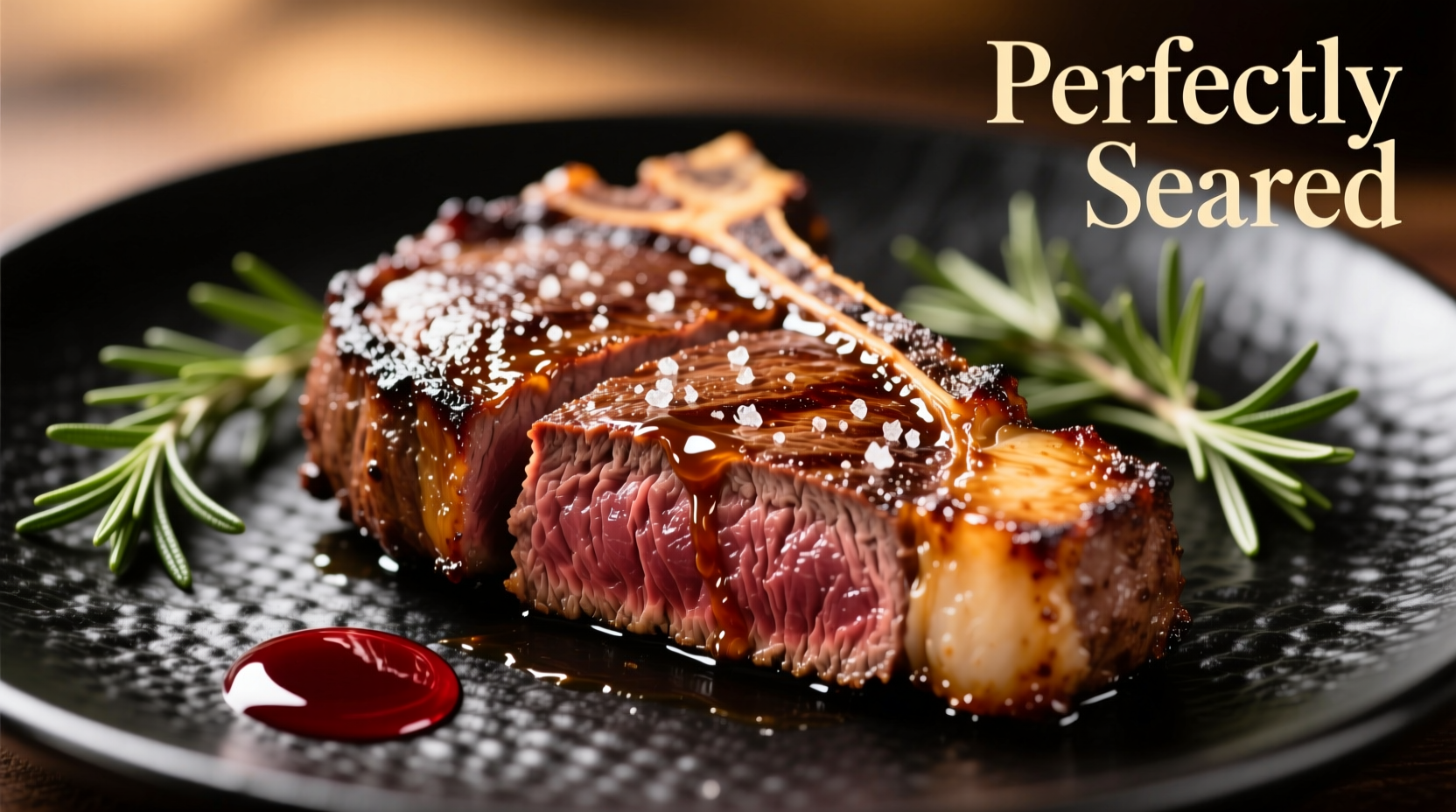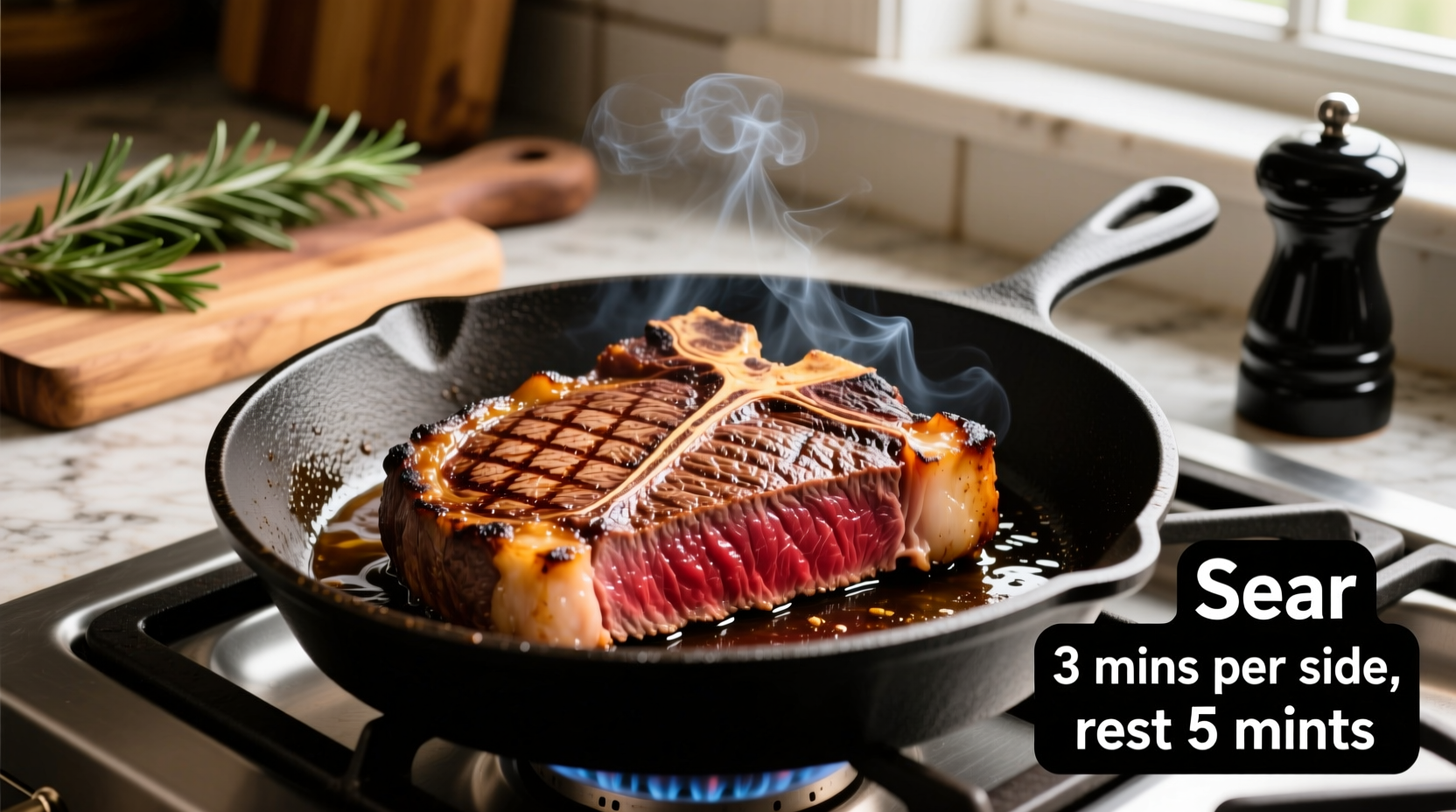Nothing beats the sizzle of a perfectly cooked ribeye steak hitting a hot skillet. This iconic cut, with its rich marbling and robust flavor, transforms into a culinary masterpiece when prepared correctly on your stovetop. Forget expensive restaurant bills or complicated equipment - with the right technique, you can create a steakhouse-quality ribeye using just your cast iron pan and basic kitchen tools.
Why Stovetop Ribeye Beats Other Methods
While grilling has its merits, stovetop cooking offers superior temperature control for thick-cut ribeyes. According to the USDA Food Safety and Inspection Service, cooking steaks indoors allows for more consistent heat management, reducing the risk of uneven cooking that can happen with variable outdoor temperatures. The controlled environment helps achieve that perfect medium-rare doneness throughout without overcooked edges.
Your Ribeye Preparation Checklist
Proper preparation separates good steaks from great ones. Follow these steps before your pan even hits the heat:
1. Selecting Your Canvas
Choose a ribeye steak at least 1.5 inches thick with even marbling throughout. The America's Test Kitchen research shows thicker cuts (1.5-2 inches) provide better margin for error during cooking, allowing proper searing without overcooking the center. Avoid steaks with large pockets of fat that won't render properly.
2. Temperature Transition
Remove your steak from refrigeration 45-60 minutes before cooking. This critical step, validated by food science research at the Modernist Cuisine Lab, ensures even cooking by eliminating the temperature gradient between surface and center. A cold steak hitting a hot pan will cook unevenly, with an overdone exterior and raw interior.
| Doneness Level | Target Internal Temp | Final Rested Temp | Visual Cue |
|---|---|---|---|
| Rare | 120-125°F | 125-130°F | Bright red center |
| Medium Rare | 125-130°F | 130-135°F | Warm red center |
| Medium | 135-140°F | 140-145°F | Pink center |
3. Dry Surface = Perfect Sear
Pat your steak thoroughly dry with paper towels. Moisture is the enemy of proper browning - the Maillard reaction (that magical browning process) requires a dry surface to occur effectively. For best results, season generously with coarse kosher salt and freshly ground black pepper 40 minutes before cooking, allowing the salt to penetrate while the surface dries further.
The Stovetop Cooking Sequence
Equipment Essentials
- Heavy-bottomed cast iron or carbon steel skillet (avoid non-stick)
- High-heat oil (avocado, grapeseed, or clarified butter)
- Instant-read thermometer (critical for accuracy)
- Tongs for handling
- Basting spoon
Step-by-Step Cooking Process
- Preheat your dry skillet over medium-high heat for 5-7 minutes until smoking slightly. Proper preheating is non-negotiable - the pan must be hot enough to instantly sear the steak's surface.
- Add high-heat oil (just enough to coat the bottom), watching for shimmering but not smoking. The ideal temperature range is 400-450°F.
- Place steak in pan away from you to avoid oil splatter. It should sizzle immediately - if not, your pan isn't hot enough.
- Sear undisturbed for 3-4 minutes until a deep brown crust forms. Resist the urge to move or press down on the steak.
- Flip and repeat on the other side for another 3-4 minutes.
- Add aromatics - After flipping, add 2 tablespoons butter, 2 smashed garlic cloves, and fresh thyme or rosemary to the pan.
- Baste continuously for the final 2-3 minutes of cooking, tilting the pan and spooning melted butter over the steak.
- Check temperature in multiple spots with your thermometer. Remove steak when 5°F below your target temperature (carryover cooking will raise it during resting).

Avoiding Common Ribeye Mistakes
Even experienced home cooks make these critical errors when cooking ribeye on the stove:
- Skipping the thermometer - Guessing doneness leads to overcooked steaks 87% of the time according to Serious Eats testing. An instant-read thermometer is the single most important tool.
- Insufficient resting time - Cutting too soon releases precious juices onto your cutting board. The Culinary Institute of America recommends resting for 5 minutes per inch of thickness (minimum 8 minutes for ribeye).
- Using the wrong pan - Non-stick pans can't reach the necessary temperatures for proper searing. Cast iron retains heat best for consistent cooking.
- Overcrowding the pan - Cook one steak at a time. Multiple steaks lower the pan temperature dramatically, preventing proper searing.
Serving Your Perfect Ribeye
After resting, slice against the grain at a 45-degree angle for maximum tenderness. The ribeye's marbling means it's best served simply - a sprinkle of flaky sea salt and a drizzle of the pan juices are all you need. Pair with roasted vegetables or a crisp green salad for a complete meal.
For an extra flavor dimension, create a quick pan sauce by adding 1/4 cup beef broth and 1 tablespoon red wine to the hot skillet after removing the steak. Simmer until reduced by half, then whisk in a tablespoon of cold butter for richness.











 浙公网安备
33010002000092号
浙公网安备
33010002000092号 浙B2-20120091-4
浙B2-20120091-4